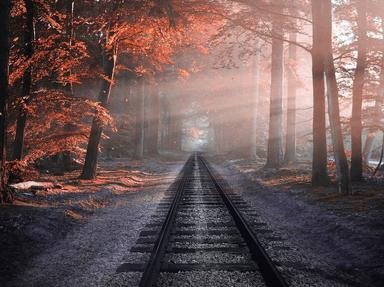Quiz Answer Key and Fun Facts
1. The first capital of unified Italy, Turin is home to several royal residences of the Savoy family. What animal - also featured on the badge of Lamborghini cars - appears on the Turin coat of arms?
2. Founded in 1908 and headquartered in the industrial city of Ivrea, the Olivetti company was originally associated with the manufacturing of which once-ubiquitous office item?
3. The city of Mantua was one of the main centres of the Italian Renaissance. In which famous opera by Giuseppe Verdi would you find the lecherous Duke of Mantua and a court jester bent on revenge?
4. Leonardo da Vinci's celebrated "The Last Supper" is housed in the refectory of the convent of Santa Maria delle Grazie in Milan, built in the 15th century for the Order of Preachers - also known by what other name?
5. The Prosecco Hills in the Veneto Region are one of the most recent additions to the World Heritage list. What is Prosecco?
6. The magnificent mountain range known as the Dolomites is named after the carbonate mineral dolomite. What other sedimentary rock is dolomite closely related to?
7. A series of contiguous brackish lagoons, the picturesque Valli di Comacchio are part of the Po Delta. What fish (much prized in Japanese cuisine) is traditionally farmed there?
8. The Scrovegni Chapel in Padua and the Basilica of St Francis in Assisi are globally renowned for the magnificent frescoes by which Italian artist of the Late Middle Ages, considered the forerunner of the Renaissance?
9. What kind of structures would you expect to find when visiting the Etruscan sites of Cerveteri and Tarquinia?
10. One of the earliest Italian sites to be added to the World Heritage list, the historic centre of Rome also includes some properties of the Holy See. What of these adjectives best describes these properties?
11. Two beautiful World Heritage sites, the Roman Villa Adriana and the Renaissance Villa d'Este, are located in the town of Tivoli, just east of Rome. Where would you find a large amusement park named after this town?
12. The Amalfi Coast is internationally renowned for its scenic beauty and pleasant climate. Which brightly-coloured liqueur is a specialty of this gorgeous site?
13. The stunning Castel del Monte in Apulia was built in the 13th century as a hunting lodge for which great ruler of the Middle Ages, nicknamed "Stupor Mundi" (Wonder of the World)?
14. One of the transnational sites shared by Italy with another 17 European countries involves forest of deciduous trees of the genus "Fagus". What tree does this name refer to?
15. The Sassi of Matera in the southern region of Basilicata are a unique complex of ancient rock dwellings. What controversial, religious-themed movie, released in 2004, was filmed there?
16. Seven groups of medieval buildings located in various parts of Italy bear witness to the remarkable achievements of what Germanic people, named after a distinctive facial feature?
17. Though William Shakespeare almost certainly never visited Italy, many of his plays are set there. Which of these four cities - all included in the World Heritage list - is NOT one of the settings used by Shakespeare?
18. The beautiful Sicilian city of Syracuse was the hometown of famed Greek scientist and inventor Archimedes. Which of his alleged inventions was a device that involved the use of mirrors?
19. One of the world's most active volcanoes, Mount Etna looms over the city of Catania. Which Greek deity was believed to have his workshop underneath the mountain?
20. The most famous of the stunning mosaics of the Villa Romana del Casale in Piazza Armerina (Sicily) shows a group of young women wearing an early version of what skimpy item of clothing?
Source: Author
LadyNym
This quiz was reviewed by FunTrivia editor
trident before going online.
Any errors found in FunTrivia content are routinely corrected through our feedback system.

